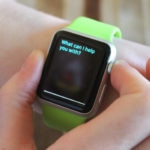Life synchronized with wearable devices
Wearable technology will grow substantially in 2016. Monitoring physical activity is one of the consumer's preferred uses.

We're increasingly more connected; brands are everywhere in our daily life; and wearables are becoming a more common sight. According to a report by the media agency Mindshare WPP and Goldsmiths (University of London), consumers rate monitoring physical activity and facilitating payments as the most important uses of wearable technologies.
The research project Shift 2015 aimed to understand the main reasons for consumers to use wearable technologies, and the opportunities it raises for brands and advertisers. The research's methods included workshops, device testing, interviews with experts and a survey. And it was possible to identify a series of needs with positive response from the consumers:
Flow
Making daily life easier and more efficient was the most popular need, as chosen by 36% of smartphone users in the United Kingdom. Specifically, almost one third of these respondents (31%) declared their interest in using wearables to pre-order products and avoid lines at stores; 38% were interested in wearables which regulated home heating or lighting when they entered a room; and 29% wished to use wearables to open their car's doors. And all this serves to emphasize the potential shown by these devices to make life easier and smoother.
Reflection
The second most important need (as identified by 35% of smartphone users in the UK) referred to using data obtained from wearable devices to identify ways of improving your fitness and physical well- being.
76% of these users said the ability to monitor their physical activity helped improve their lives, while 50% said they were interested in being able to use wearable technologies to measure and analyze sleep patterns.
Opportunity for Advertisers
This report also identified five key opportunity areas for advertisers.
- Push notifications: Automatic, context-based alerts defined by smartphone users.
- Search ads: Paid aids which are shown on the wearable device after performing searches.
- Brand utility: Services created by the brand for the consumer to operate on the wearable device.
- Brand experience: in real life, made possible by wearable technologies.
- Content personalization: delivery of personalized content to other platforms based on data from the wearable device.
Additionally, this research showed that 13% of UK smartphone users (eight million adults) will probably buy a wearable device within the next 12 months. 16% of the population is estimated to be using wearable technologies in 2016.
The Research Director at Mindshare UK, Jeremy Pounder, talks about this data and its use: "The marketing world was slow to appreciate the significance of the shift from desktop to mobile. We don't want to make the same mistake with the rise of wearables and the internet of things."
"As wearables start to connect individuals physically to the web, our research shows there will be huge communications opportunities for brands in terms of new, more personalized advertising models, brand utility and brand experiences fueled by wearables. Now is the time for experimentation and we're already applying these insights for our clients' communications this summer," he says.
Dr. Chris Brauer, of the Institute of Management Studies at Goldsmiths, University of London, adds: "Shift 2015 tests many expectations and ambitions of wearable technologies and makes it is clear that wearables can play a key role in augmenting our humanity in a more natural and integrated way than the current generation of mobile technologies."
"There is a lot of interest in companies that develop hardware and software for the new wearable devices but we wanted to look more broadly and see how marketing works or will work as well as consumer interaction with the brands. Wearable technologies have the potential of radically changing how consumers participate and interact with the brands"
"Shift is mostly about the historical change derived from moving from the desktop to laptops, to mobile technology and finally to wearable devices," adds Dr. Brauer. "It is about the emerging power of these small connected devices on the body but it is also about the shifting impact wearables have on a connected self and world forming and shaping both interpersonal and intrapersonal connectivity, for example, by correlating your moods and your productivity levels."
Current Situation in Mexico
Ricardo Carvajal, Digital VP of Mindshare Mexico states: “Over the next few years, wearable devices will become common in the daily lives of Mexican consumers. In this sense, the SHIFT 2015 study and the Mindshare's innovation laboratories in London aim to go even farther and find the points of contact with consumers, study their efficacy, and guide and help our customers to find new opportunities to be present in their consumers' life. However, brands must also do their share and choose people in their teams who will test these technologies and find original and relevant ways of using them to link to the consumer."